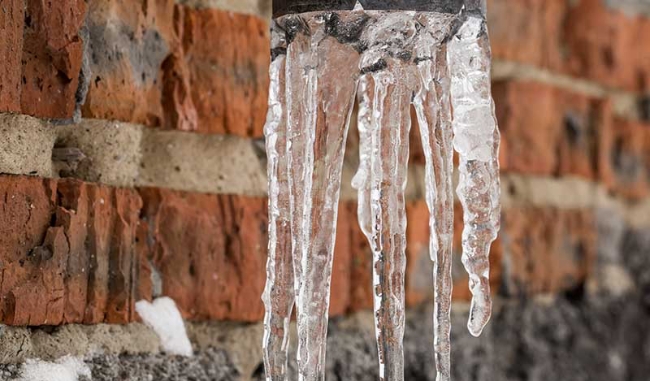Are you trying to find ideas concerning Preventing and dealing with frozen pipes?

Cold weather can wreak havoc on your pipes, specifically by freezing pipelines. Right here's exactly how to avoid it from taking place and what to do if it does.
Intro
As temperatures drop, the threat of icy pipes boosts, potentially leading to expensive repair services and water damages. Recognizing exactly how to avoid frozen pipes is vital for house owners in chilly environments.
Prevention Tips
Insulating at risk pipes
Cover pipes in insulation sleeves or make use of heat tape to shield them from freezing temperatures. Concentrate on pipelines in unheated or exterior locations of the home.
Home heating methods
Maintain indoor rooms sufficiently warmed, especially areas with plumbing. Open up closet doors to allow warm air to distribute around pipelines under sinks.
How to determine frozen pipes
Try to find lowered water flow from faucets, unusual odors or noises from pipes, and visible frost on subjected pipelines.
Long-Term Solutions
Structural modifications
Think about rerouting pipelines away from exterior wall surfaces or unheated areas. Add added insulation to attics, basements, and crawl spaces.
Upgrading insulation
Buy top notch insulation for pipes, attic rooms, and walls. Proper insulation assists maintain regular temperatures and lowers the risk of frozen pipelines.
Protecting Outside Plumbing
Garden tubes and outdoor faucets
Disconnect and drain yard tubes before winter season. Mount frost-proof faucets or cover outdoor faucets with shielded caps.
Understanding Frozen Pipes
What triggers pipelines to ice up?
Pipelines ice up when exposed to temperatures listed below 32 ° F (0 ° C) for expanded periods. As water inside the pipelines freezes, it broadens, taxing the pipe wall surfaces and potentially triggering them to burst.
Threats and problems
Frozen pipes can cause water disruptions, home damage, and expensive repair work. Burst pipelines can flood homes and cause comprehensive architectural damage.
Signs of Frozen Pipes
Identifying icy pipes early can stop them from rupturing.
What to Do If Your Pipes Freeze
Immediate actions to take
If you suspect icy pipelines, maintain faucets available to eliminate pressure as the ice thaws. Utilize a hairdryer or towels taken in hot water to thaw pipelines slowly.
Verdict
Avoiding icy pipelines needs proactive actions and quick actions. By understanding the reasons, indications, and safety nets, home owners can safeguard their pipes during cold weather.
6 Proven Ways to Prevent Frozen Pipes and Protect Your Home
Disconnect and Drain Garden Hoses
Before winter arrives, start by disconnecting your garden hoses and draining any remaining water. Close the shut-off valves that supply outdoor hose bibs and leave the outdoor faucet open to allow any residual water to drain. For extra protection, consider using faucet covers throughout the colder months. It’s also important to drain water from any sprinkler supply lines following the manufacturer’s directions.
Insulate Exposed Pipes
Insulating your pipes is an effective way to prevent freezing. Pipe insulation is readily available at home improvement stores and is relatively inexpensive. Pay close attention to pipes in unheated areas such as the attic, basement, crawl spaces, or garage. Apply foam insulation generously to create a buffer against the cold. You can also wrap your pipes in heat tape or thermostat-controlled heat cables for added warmth.
Seal Air Leaks
Inspect your home for any cracks or openings that could let in cold air. Seal any holes around the piping in interior or exterior walls, as well as the sill plates where your home rests on its foundation. Additionally, make sure to keep your garage door closed unless you’re entering or exiting. Leaving it open creates a significant air leak that can lead to frozen pipes.
Allow Warm Air Circulation
During cold snaps, it’s essential to allow warm air to circulate evenly throughout your home. Leave interior doors ajar to promote better airflow. Open kitchen and bathroom cabinets to help distribute heat consistently around the rooms. If you have small children or pets, be sure to remove any household chemicals or potentially harmful cleaners from open cabinets for safety.
Let Faucets Drip
A small trickle of water can make a big difference in preventing ice formation inside your pipes. When temperatures drop significantly, start a drip of water from all faucets served by exposed pipes. This continuous flow helps prevent the water from freezing. Additionally, running a few faucets slightly can relieve pressure inside the pipes, reducing the chances of a rupture if the water inside does freeze.
https://choateshvac.com/6-proven-ways-to-prevent-frozen-pipes-and-protect-your-home/

As a reader on 6 Ways to Prevent Frozen Pipes, I imagined sharing that excerpt was a good idea. Sharing is good. One never knows, you may just be helping someone out. I recognize the value of reading our article about How To Avoid Freezing Pipes.
Visit Page